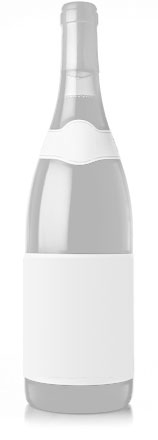2018 Almaviva (Puente Alto)
Secondary Description
Concha y Toro/Baron Philippe de Rothschild
Producer
Origin
Puente Alto, Maipo Valley, Chile, The Americas, CHILE
Colour
red
Wine Style
dry
Dominant Grape
Cabernet Sauvignon
Closure Style
cork
Maturity
drink or keep
Bottle size
75cl
Case Quantity
6
Alcohol
15%
Score
96 points, Luis Gutierrez, robertparker.com, August 2020
98 points, James Suckling, jamessuckling.com, April 2020
98 points, Tim Atkin MW, timatkin.com, 2021 Chile report
This product is delisted and unavailable for sale.

Media Reviews
Luis Gutierrez
My last Chile article questioned whether 2018 had been the best vintage of the last 20 years in the country, so I was very curious to taste the 2018 Almaviva. 2018 was a cooler year with more rain and a later budding and ripening of the grapes, especially in a cooler terroir close to the Andes, as is the case with Almaviva. The harvest was slow, as temperatures went down, further increasing the balance between freshness and ripeness of the grapes. The varietal breakdown is 72% Cabernet Sauvignon, 19% Carmenère (from Peumo), 6% Cabernet Franc and 3% Petit Verdot. The grapes ripened thoroughly, as the 14.9% alcohol of the final blend shows, a little higher than previous years and with similar readings of acidity. The wine feels quite complete and nicely crafted; they use all of their resources and technology to select the perfect grapes that ferment pristinely destemmed and crushed in stainless steel tanks at 25 to 28 degrees Celsius, mostly with selected yeasts. Malolactic was part in barrique and part in tank during the alcoholic fermentation. It matured for 18 months in French oak barrels, 73% of them new and the remaining 27% second use. It`s a solid, well-built and seamless Almaviva, with clout and balance. 2018 was a more homogeneous vintage, globally considered one of the best in recent times in Chile. They identify a great vintage when they see more homogeneous quality in their different wines, and winemaker Michel Friou explained that this year some wines from three- or four-year-old vines were really good. It feels like a very complete wine, from a year when the seasons were marked and when the plant followed the development with almost textbook conditions—the grapes ripened thoroughly, developing more flavors and nuances while keeping the freshness. This is still a baby, extremely young and creamy, but it is still approachable; there are no edges, but what`s remarkable is the balance and stuffing and all the necessary ingredients for a great development in bottle. This is quite different from 2016; it`s a vintage with power and clout, a wine that has fruit and intensity and is balanced, without the concentration and tannins of the 2017. It’s a more complete year that combines the finesse of 2016 with more thorough ripeness. The spicy and peppery character comes through with some time in the glass. 96 points
James Suckling
This is such a beautifully nuanced red with tobacco, dried herbs, wet earth and currants. Some leather and rose petals, too. Full-bodied and chewy, yet refined with great polish. It’s rich and intense at the same time. Very focused center palate. Broad layers of tannin and fruit. A blend of 72% cabernet sauvignon, 19% carmenere, 6% cabernet franc and 3% petit verdot. Better after 2024, but already a joy to taste. 98 points
Tim Atkin MW
Every bit as good as the 2017 release that was red wine of the year in my 2020 report, this is
perhaps surprisingly high in alcohol for a 2018, but shows the balance and harmony that are
the hallmarks of an outstanding harvest. Dense yet refreshing, it`s an assemblage of Cabernet
Sauvignon with 28% Carmenère, Cabernet Franc and Petit Verdot, with grassy, herbal top
notes, understated concentration, well handled 73% new wood, cassis and blueberry fruit,
savoury tannins and the structure and focus that make this one of Chile`s greatest reds. 98 points